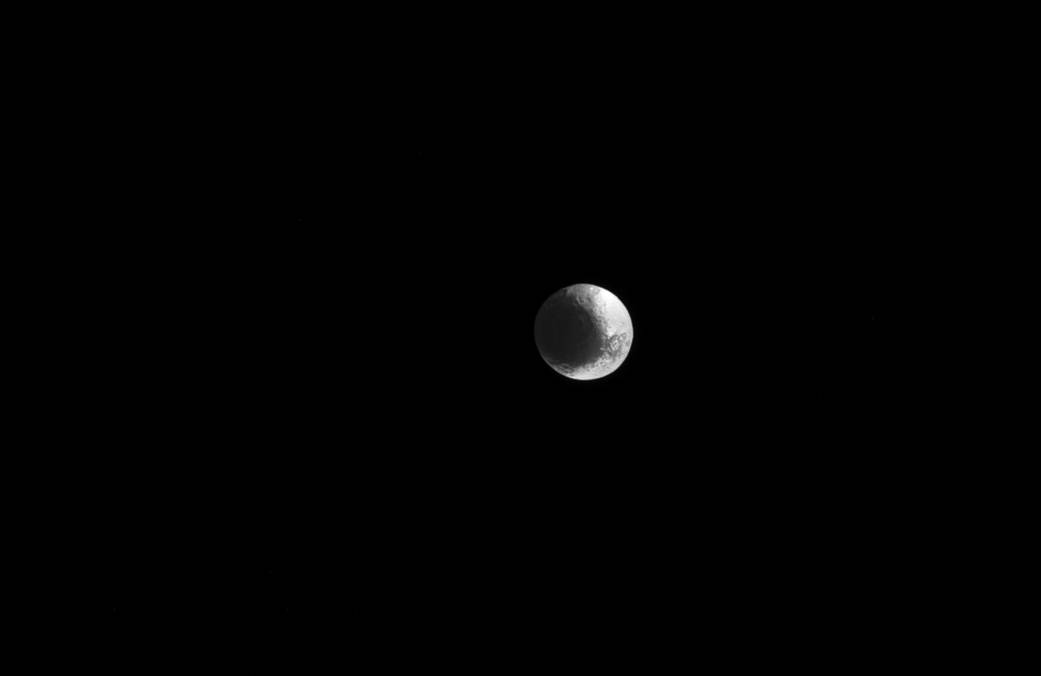Iapetus is a world of contrast, with light and dark regions fitting together like cosmic puzzle pieces.
Cassini Regio on Iapetus (914 miles or 1,471 kilometers across) is covered in a layer of dark, dusty material creating a stark contrast to the much brighter region that surrounds it. This leads to the moon’s distinctive, two-toned appearance. To learn more about the cause of the contrast between regions, see PIA06166.
This view looks toward Saturn-facing hemisphere of Iapetus. North on Iapetus is up and rotated 20 degrees to the right. The image was taken in visible light with the Cassini spacecraft narrow-angle camera on March 11, 2017.
The view was obtained at a distance of approximately 1.6 million miles (2.6 million kilometers) from Iapetus. Image scale is 9 miles (15 kilometers) per pixel.
The Cassini mission is a cooperative project of NASA, ESA (the European Space Agency) and the Italian Space Agency. The Jet Propulsion Laboratory, a division of the California Institute of Technology in Pasadena, manages the mission for NASA’s Science Mission Directorate, Washington. The Cassini orbiter and its two onboard cameras were designed, developed and assembled at JPL. The imaging operations center is based at the Space Science Institute in Boulder, Colorado.
For more information about the Cassini-Huygens mission visit http://saturn.jpl.nasa.gov and https://www.nasa.gov/cassini. The Cassini imaging team homepage is at http://ciclops.org.
Credit: NASA/JPL-Caltech/Space Science Institute
























